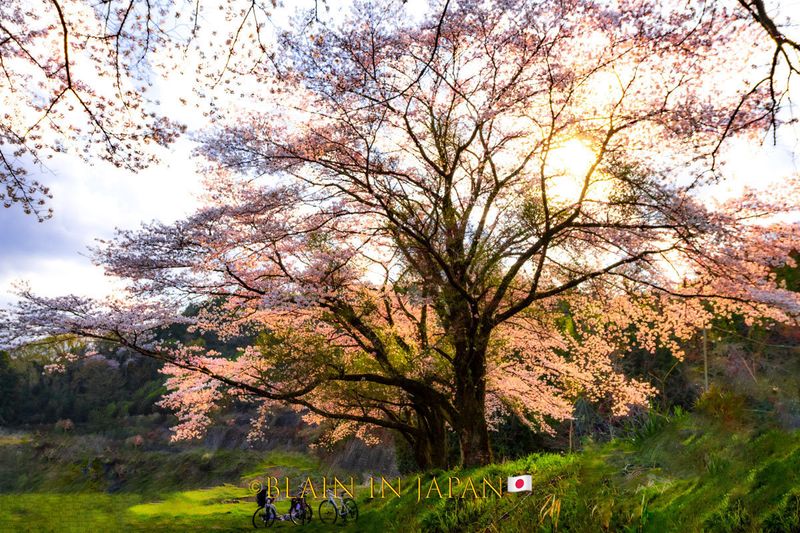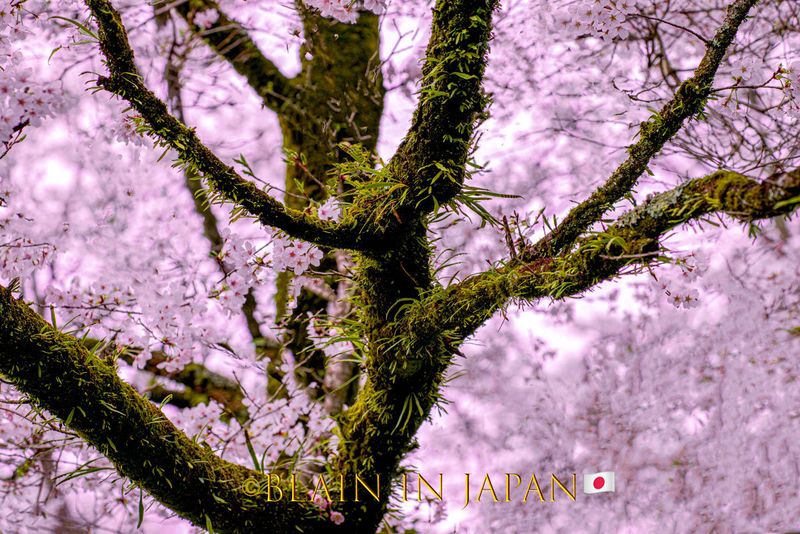Feb 27, 2022
The Three Greatest Sakura Cherry Blossom Trees Of Japan
Gallery - The Three Greatest Sakura Cherry Blossom Trees Of Japan

It's starting to feel like Cherry Blossom viewing, or hanami, is right around the corner, so I started to think of the most well known sakura trees in Japan. The Three Greatest Sakura Cherry Blossom Trees of Japan are the Miharu Takizakura in Fukushima, the Usuzumi-zakura in Gifu, and the Jindaizakura in Yamanashi. Each of these cherry blossom spectacles has its own captivating history and make for an amazing photo op, but I don’t have one favorite sakura tree. Each one holds its own natural energy having lived for thousands of years. I feel that these trees are vortices of energy, power spots. Some people have said they felt a vibration, a sense of power, emanating from the trees like a hum, a spiritual calling to which they unwittingly answer on their personal visits to the power spots as they drink in the natural power that each cherry blossom tree offers.
Pondering upon the spiritual impact and value the sakura trees represent, I am always drawn back to Zen teaching of the Beginner’s Mindset. As the Zen master, D.T. Suzuki said, “I like Zen because everything is Zen.” A beginner sees myriad possibilities in each theme and pursuit, so that is the mindset I bring along to each project I participate in, and I am hopeful everyone can bring the same mindset with them, but this is not reality, and the Zen Buddhist mindset along with photography take time to develop. I understand that the paradoxes created by the Beginner’s Mindset requires time to fully grasp. Many colleagues and fellow photographers feverishly hold onto their pride and feel that because they are “professional” photographers, they know the best expression of a theme and therefore limit the potential of the photographic subject. As an instructor of the visual arts, I feel this is a catastrophic mistake. Following the Beginner’s Mindset means dispelling misguided, preconceived notions and photographing the cherry blossom trees with the goal of capturing them in their natural environment and treasuring the small window of opportunity that I have every year as the sakura reach full bloom.

The Miharu Takizakura in Fukushima prefecture is what is referred to as a shidarezakura variety of cherry blossom. In English, it would be translated as ‘waterfall cherry’ because of how the branches arc up but then bend downward under the weight of the cherry blossoms, making it seem that the tree trunk is a spring from which the pink-tinged white petals flow forth from. The Miharu Takizakura is over 1,000 years old and an on the beaten path location as over 200,000 visitors each year pay a visit and photograph this spectacular tree. The Usuzumi-zakura Cherry Blossom Tree in Gifu prefecture is even older than the Miharu Takizakura being 1,500 years or even older, and the tree is part of Japan’s folklore, as the Keitai Emperor is credited with having chosen the location and planted the tree himself during his reign from 507 - 531 AD. The name of the tree is also a tale unto itself. The name means pale, inky black, which seems like an odd name to attach to this ancient cherry tree, but as a Japanese local, I have seen the reason. The buds of this storied tree begin with the petulant shade of pink, and then give way to a sparkling white when in full bloom, and then as they fall from the tree, they darken, ultimately turning into the inky black as they meet their seasonal end. I have photographed them in all stages of their ephemeral existence, and I look forward to seeing them again this year or in 2023. In my experience, I would say at the peak of visitation, the Usuzumi-zakura has as many if not more than the 200,000 Fukushima visitors. The final of three great Cherry Blossom trees of Japan is the Jindaizakura of Yamanashi prefecture. This tree’s planting reaches back two millennia or more, but we don’t know the exact date! It’s credited as being the oldest cherry blossom tree in Japan and perhaps the entire world. The Jindaizakura traces its roots back to the 12th Emperor of Japan, the legendary Yamato Takeru, but that is only the beginning of the mythic stories related to this cherry blossom tree. The Buddhist priest Nichiren happened upon the tree in the 13th century, and the tree was wilting away and on the verge of dying; the sight of the Jindaizakura in its deplorable condition saddened the priest so profoundly that he prayed for the tree, and it was soon miraculously restored to perfect health. This tree is truly from the age of the gods, as its name indicates. I have visited this tree on several occasions, and I feel the energy emanating from it every time I get near it. The pictures reflect this tree’s mythical origins. Of all the three great Cherry Blossom trees of Japan, this one has the most visitors by far, and I hope that it will continue to have a record number of visitors for several more millennia.
I never thought I would call Japan my home, but after 20 years I understand the beauty and appeal of Land of the Rising Sun. Part of my affection for Japan stems from my bride, Manami who introduced me to the essence of this magical land. As an amateur historian and sociologist, the uniqueness of Japan’s past captured my heart and soul, bonding me to the society and culture that is now a part of me. This society has embraced me, and I am no longer a visitor, I have recast myself as a cultural hybrid, always updating my identity with the rich cultural information from the past into the present, and, invariably, the future.



0 Comments